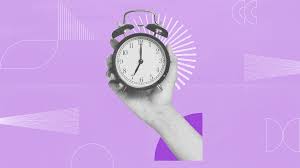Introduction
In the dynamic landscape of call centers, Average Hold Time (AHT) stands out as a critical metric, reflecting the duration a customer spends on hold during a service interaction. This comprehensive exploration delves into the definition of Average Hold Time, its significance in the call center ecosystem, calculation methods, influencing factors, strategies for improvement, and its impact on overall customer experience.
Definition of Average Hold Time (AHT)
Overview
Average Hold Time (AHT) is a metric that quantifies the average duration a customer spends on hold during a customer service interaction. It encompasses the time a customer is placed on hold before speaking with a live agent or receiving assistance.
Components of AHT
Hold Time: The time a customer spends waiting on hold, typically measured in seconds or minutes.
Total Hold Time: The cumulative hold time across all customer interactions.
Significance of Average Hold Time
Operational Efficiency
AHT is a crucial measure of operational efficiency. It reflects how effectively a call center manages customer wait times, impacting overall service quality.
Customer Experience
Hold times directly influence the customer experience. Excessive hold times can lead to frustration and dissatisfaction, while shorter hold times contribute to positive experiences.
Resource Optimization
AHT is linked to resource optimization. Efficiently managing hold times allows call centers to allocate staff effectively, ensuring they are available when needed.
Call Center Reputation
Hold times contribute to the overall reputation of a call center. Call centers with shorter hold times are generally perceived more positively by customers.
Impact on Customer Satisfaction
AHT plays a role in determining customer satisfaction levels. Customers are more likely to be satisfied when they experience shorter hold times and quicker issue resolution.
Factors Influencing Average Hold Time
Call Volume
High call volumes often lead to longer hold times as more customers vie for attention. Predicting and managing call volumes is crucial for controlling AHT.
Staffing Levels
Insufficient staffing can result in longer hold times, especially during peak hours. Adequate staffing, informed by forecasting, is essential to managing AHT.
Seasonal Trends
Seasonal fluctuations can impact call center traffic. Awareness of seasonal trends allows call centers to adjust staffing and resources accordingly.
Call Complexity
Complex issues may require longer hold times as agents work to provide comprehensive solutions. Understanding the nature of calls helps manage customer expectations.
Call Center Technology
The efficiency and capabilities of call center technology, including interactive voice response (IVR) systems and call routing algorithms, influence hold times.
Strategies for Improving Average Hold Time
Efficient Call Routing
Implementing advanced call routing algorithms directs calls to the most appropriate agents, minimizing hold times and ensuring quicker issue resolution.
IVR Optimization
Interactive Voice Response systems can be optimized to handle routine queries, reducing the need for customers to wait for live agent assistance.
Staff Training
Well-trained agents can handle calls more efficiently, reducing overall handling times, including hold times.
Real-Time Monitoring
Real-time monitoring of call center metrics allows for immediate intervention when hold times spike, helping to maintain acceptable service levels.
Forecasting and Staffing
Accurate forecasting of call volumes and proper staffing levels ensure that there are enough agents available to handle incoming calls promptly.
Average Hold Time in Multichannel Environments
Evolving Communication Channels
As call centers transition into multichannel contact centers, AHT calculations become more complex. Interactions now occur over the phone, chat, email, and social media.
Unique Characteristics of Each Channel
The AHT for a chat interaction, for example, would include the time spent waiting for a response. In contrast, for an email interaction, it would consider the time taken to receive a reply.
Adapting AHT Metrics
Call centers need to adapt AHT metrics to the unique characteristics of each communication method. This includes considering specific actions and timeframes relevant to each channel.
Technology’s Role in Managing Average Hold Time
Queue Management Systems
Advanced queue management systems prioritize and route calls efficiently, reducing overall hold times.
Predictive Dialers
Predictive dialers anticipate agent availability, initiating outbound calls only when agents are ready to handle them, minimizing hold times.
Callback Options
Offering customers the option to receive a callback rather than waiting on hold allows them to manage their time and reduces the perception of long hold times.
Automated Solutions
Chatbots and virtual assistants can address routine queries without requiring customers to wait for a live agent, contributing to shorter hold times.
Industry Benchmarks and Best Practices
Industry Benchmarks
Industry benchmarks for AHT vary by sector and call center type. Understanding these benchmarks helps call centers set realistic targets for hold times.
Best Practices
Implementing best practices, such as efficient call routing, optimizing IVR systems, and proactive staffing, contributes to maintaining acceptable AHT levels.
Balancing AHT with Customer Satisfaction
Striking the Right Balance
While AHT is crucial for operational efficiency, it must be balanced with the goal of providing excellent customer service. Reducing AHT should not compromise the quality of interactions.
Customer Perception
Customers may prioritize quick issue resolution, but the perception of service quality is also influenced by the overall experience, including hold times.
Regular Feedback
Gathering feedback from customers about their experiences, including hold times, provides valuable insights for continuous improvement.
Conclusion
Average Hold Time is a pivotal metric in the call center landscape, influencing operational efficiency, customer satisfaction, and overall call center reputation. By understanding the factors influencing hold times, implementing effective strategies, and leveraging technology, call centers can manage AHT effectively while providing a positive customer experience. Striking the right balance between efficiency and service quality ensures that Average Hold Time contributes to, rather than detracts from, the overall success of a call center.
Get weekly updates to this blog, see attached.
